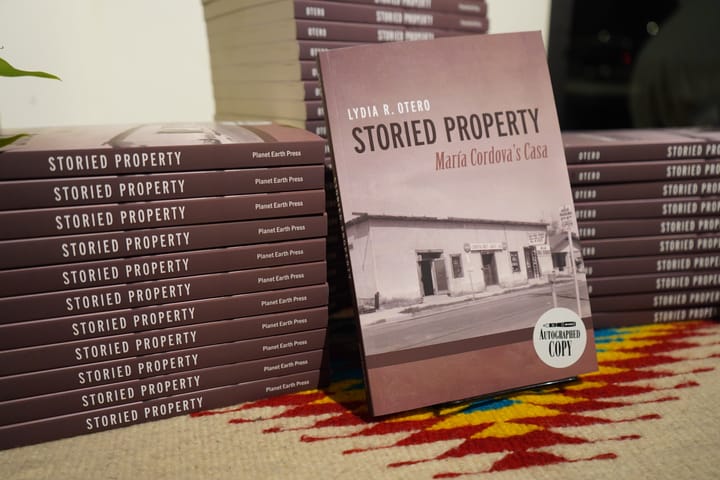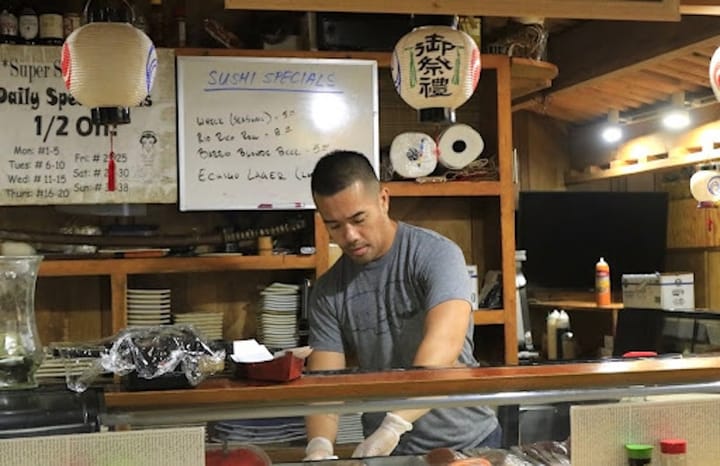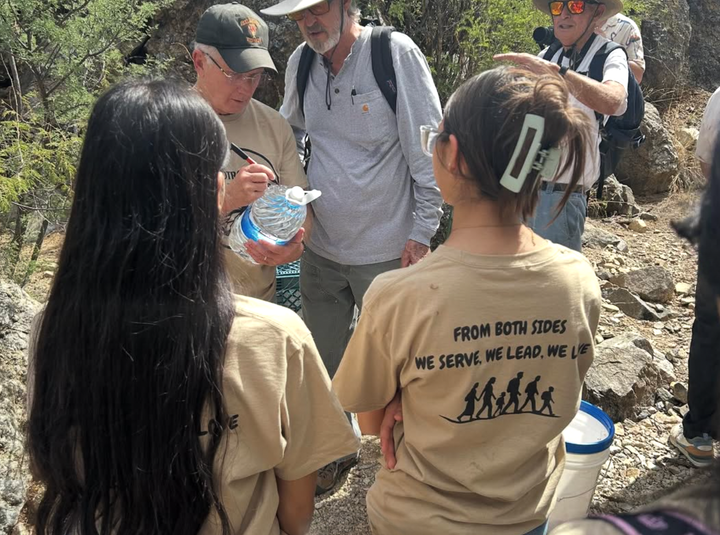High schoolers turn sunshine into speed at SARSEF solar kart showdown
High school students from across Arizona put their engineering skills to the test in Tucson by designing, building and racing solar-powered go-karts after months of hands-on STEM training.

After eight months of building, troubleshooting and teamwork, dozens of high school students brought solar-powered go-karts to life in Tucson on Saturday, proving that hands-on STEM education can run on both sunlight and determination.
More than 100 students, mentors, teachers and spectators gathered at Tucson’s Musselman Honda Circuit for the annual Racing the Sun race day, hosted by the Southern Arizona Research, Science and Engineering Foundation.
The wind whipped across the open track, sending dust swirling through the pit tents as students tightened bolts and checked wires. The blazing sun overhead was welcomed, as solar panels soaked up the rays, converting light into power.
This intense go-kart race is the culmination of the Racing the Sun program, which gives high school students the opportunity to design, build and race solar-powered and electric go-karts.
The teens arrive at the program lacking technical skills, but over the course of a semester, learn hands-on engineering and teamwork. Teachers use the lure of go-karts to equip students with tools they can use in their future careers.
“It’s not just about building a car; it’s about teamwork, communication, and navigating real challenges,” said Kayla Miranda, SARSEF’s program specialist.
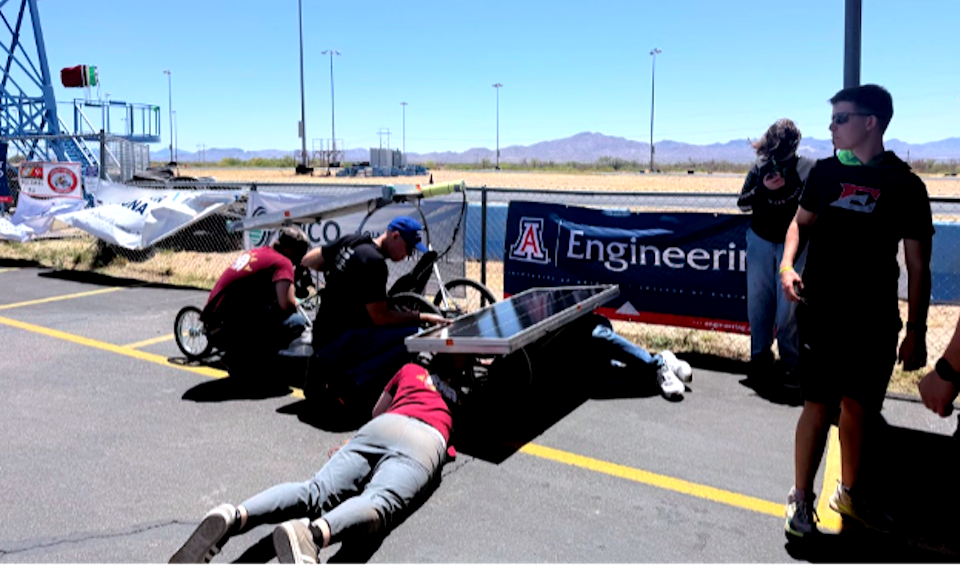
Some schools offer the program as a class with Career and Technical Education credit, while others offer it as an extracurricular club.
Both the class and club introduce students to the rules, project timelines and basic components like speedometers and battery packs.
From there, students are responsible for designing their karts, creating schematics and troubleshooting mechanical and electrical problems. But they don’t have to do it all alone; they’re supported by retired engineers who mentor them through the scientific process.
Miranda said the goal is to teach technical skills and stress management, build team trust and help students adapt when things don’t go as planned.
Leading up to race day, students go through a series of test days to troubleshoot any issues before they hit the track, learning to fail and fix problems on the fly. Failure isn’t a setback in this program — it’s a step toward success, teaching resilience by allowing them to face problems head-on.
“Failure is a lot of success in ways — it’s part of the process and how students grow,” Miranda said.
On race day, a team from South Tucson arrived filled with nerves, since their kart was still not operational the night before. But they rallied together at 5:30 a.m. to address the mechanical issue, and with their determination, they were able to get their kart up and running.
“Whatever happens, we’ll all be proud of what we achieved,” said Jimena Torres, the team’s driver.
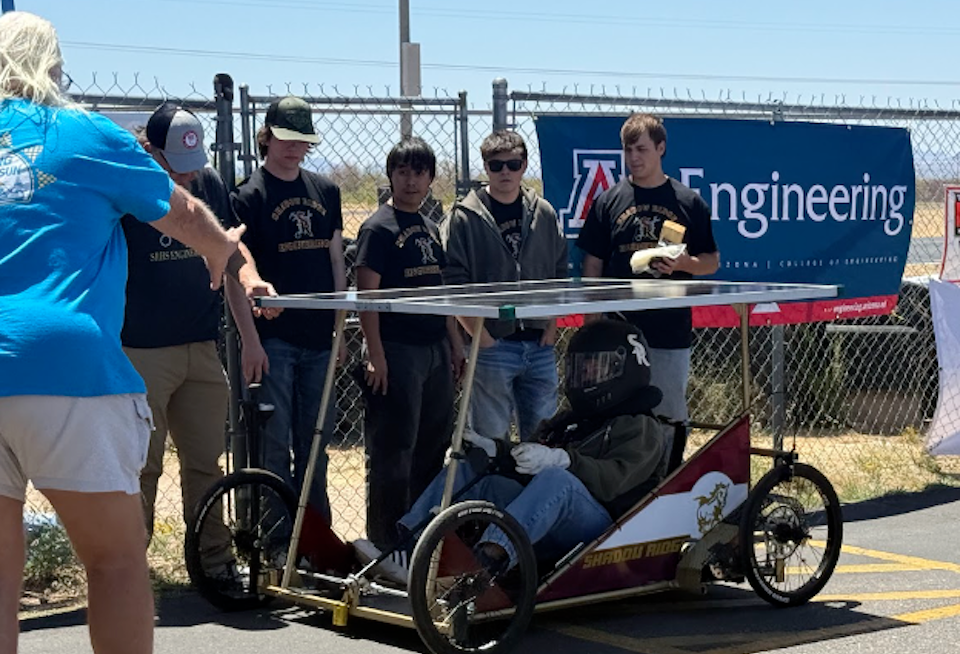
Teammate Alessandra Trujillo talked about the unpredictable obstacles they’d faced along the way, like rebuilding the team after losing several members early on.
“Trying to get back up and building that teamwork together was something we had to work on — and something we did accomplish in the end,” said Trujillo.
For many, this was their first exposure to engineering, and some admitted to feeling overwhelmed initially, not knowing how to use basic power tools. But by the end of the eight-month process, they gained confidence in their ability to collaborate, solve problems and persevere as a team.
For Alyssa Machado, the experience was a crash course in planning for the unexpected. She recalled how the team’s car finally ran for the first time on the morning of race day — an impressive 15-foot run.
At the start of the program, she didn’t even know how to use a screwdriver, but by the end, she had gained confidence in her mechanical abilities and felt proud of how far she and her team had come.
“Perseverance is something we really learned — but also asking for help and really trying to understand what we were doing,” said fellow team member Torres.
Cesar Chavez High School’s Alejandro Capron was appointed project manager for his team. Though he had some prior experience with engineering, the program challenged him to refine his skills and manage a team through tight deadlines.
Capron plans to major in civil engineering in college, so he was eager to work through the deadlines and pressure. His biggest takeaway was learning to manage stress and build a strong relationship with his team.
Capron's journey wasn’t easy, especially with the challenges of 3D modeling the kart, but everything clicked once the team found its rhythm.
“As soon as we started getting momentum, everything just started going up from there,” he said.
Isaiah Davis, a student from Phoenix, was back for a second time after participating during a previous season. The stakes were higher for Davis this time around, as he was chosen to be behind the wheel.
Using knowledge from his past experience, Davis was dedicated to upgrading the team’s design, particularly in the electrical engineering aspects. Ensuring the motor and electrical wiring were ready to hit the pavement was no easy task.
“I’ve definitely learned a lot of engineering topics, especially with electrical engineering,” Davis said. “It helps me go into the field. I want to be an engineer, and this gives me a head start.”
He also learned essential communication skills throughout the process by teaching his teammates how to understand the technical concepts.
“Sometimes you don’t know how to talk to people. You try to explain, they do it wrong, then you realize you have to learn how to teach too,” he said.
San Miguel High School senior Eduardo Olguin credits the program for teaching him essential life skills he can use after graduation.
“Even though I changed career (paths,) this was a heavy influence,” he said. “What I learned still applies to everyday life.”
Racing the Sun also provides students with a career day, introducing them to various engineering firms and universities, including the University of Arizona, and putting students face-to-face with field experts who can help put their futures in perspective.
By the end of the day, every student walked away with grease-stained hands, some new friends and the thrill of seeing their ideas come to life.
“I wouldn’t have met the people I did if I wasn’t in this class," said Cesar Chavez High School's Capron. "I got closer to everyone on the team, even outside my class."
Angelina Maynes is a University of Arizona alum and reporter with Tucson Spotlight. Contact her at angelinamaynes@arizona.edu.
Tucson Spotlight is a community-based newsroom that provides paid opportunities for students and rising journalists in Southern Arizona. Please support our work with a paid subscription.

